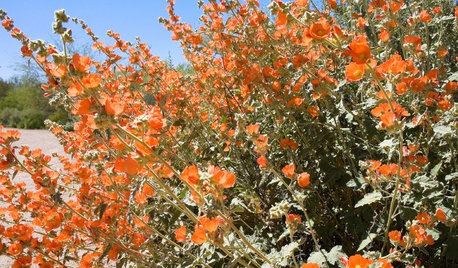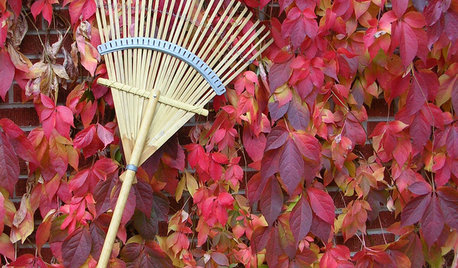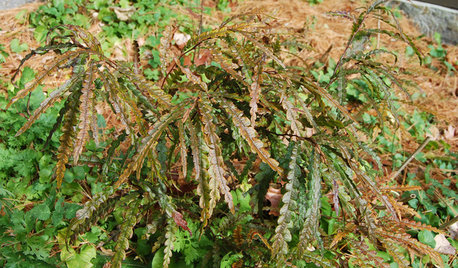If interested see at the bottom of the questions some background as to why I'm asking.
Questions related to Nitrogen application etc:
1. How much and what type of nitrogen do you apply prior to planting.
2. Do you have to give it time to break down in the soil before you seed/transplant?
3. Do you reapply nitrogen during the growing season? What type? How often?
4. How do you schedule your nitrogen applications? I mean can I say, I need to apply x type nitrogen source once every 3 weeks around the base of the plant? Any rules of thumb?
5. If you use fish emulsion, how do you determine how much to apply per plant?
6. Is there a nitrogen source that I can just top dress at the base of the plant a couple times during the growing season to insure the plants get enough nitrogen?
7. Since I'm going to underplant sweet clover and dwarf white clover with my Cabbage family and root crops, will I need to incorporate more nitrogen in the beginning?
8. When you incorporate blood meal at the beginning of the season, at what rate do you apply it? I've been using like a medium amount but thinking maybe I should go heavy.
9. Espoma is the blood meal I've been using. It's 12-0-0 and it's listed as "12% Total Nitrogen" but also says it's "12% Water insoluble Nitrogen". Does the 12 in the 12-0-0 mean 12% of something? If so, it appears to me that none of the nitrogen in this particular blood meal is water soluble. Could that be a problem? Especially since I don't have a whole lot of organic matter in my soil, so guessing little microbial action to break down the blood meal. What do you think? Reason I ask is that I've seen on the backs of other blood meal packages that they do in fact have a percentage of water SOLUBLE nitrogen.
10. Does fish emulsion have a shelf life? I've been using the Alaska brand, but it has been sitting around for a couple growing seasons at this point. Can it go bad?
11. While I'm asking, I also use Espoma Rock Phosphate and Greensand. Do I need to let them work in the soil some prior to planting.
12. When preparing your garden, how deep do you incorporate the fertilizers? I think I've been mixing them in too deep (6-8" or so). Thinking maybe they should be incorporated into maybe the top 3 inches or so. But if I do this, what happens in the case of transplants like tomatoes and peppers that will be planted deeper than that?
A little background.
I've been trying to garden organically now for about 3 years.
Started out in raised beds (adaptation of square foot method) in the peat vermiculite blend. Realized that it wasn't working for me for various reasons, so moved into the dirt this past season in a small area I cleared of some centipede grass.
This year was pretty much a complete flop (had better results with square foot method). I couldn't even grow tomatoes.
Anyway, I think my problems are the following (for both square foot and real "dirt" gardening).
1. I'm not incorporating compost (other than black kow). It's not that I don't want to, it's just up until this season, I was obsessed with keeping weeds out of the garden, thus the square foot method. I just saw compost as potentially incorporating weeds so tried without it.
2. I don't think I'm incorporating enough nitrogen.
3. I'm probably not watering enough at times.
So, I'm preparing to plant my winter garden now (for the first time) and it's going to be in the same plot as my spring garden that completely failed. I'm going to companion plant a green manure/mulch, that should help with the compost aspect NEXT year after I till it in. Hopefully, by using/beginning to grow green manures, I'll start being able to create compost also. So anyway, I'm working on the compost part.
I'm in the process of getting results for a soil test, but this past spring everything read high except for potassium (low) and I'm interested to see if that was corrected with the greensand I incorporated. What I'm getting at is, I'll incorporate whatever's needed in the form of greensand, rock phosphate, and lime. If I do this, then I'm of the impression that I should have enough phosphorous and potassium to get me through the growing season. Am i correct.... generally?
If so, then the question becomes nitrogen and I think all other things aside, this is where my biggest problem is. I don't know when or how much to apply and I think I'm being too conservative.
My father in law grows a beautiful (compared to mine) garden although he doesn't do it organically... so he's no help with "how much bloodmeal should I put down" type questions. I notice however, that he puts down "many" (I believe) applications of fertilzer during the growing season.
My "program" thus far has been to incorporate bloodmeal just before planting, then, generally I wait too long and start foliar feeding with fish emulsion. After feeding with fish emulsion, I typically see some greening up and a boost. So, I then I start based on product instructions, applying more fish emulsion for some time. Eventually, either because I'm not fertilizing enough, or drought conditions (and not enough water on my part) or soil condition or whatever, things start going to hell in a hurry and I basically give up and get excited about next year.
I think what I need to do to figure out what I'm doing wrong is to take out the whole fertilzer/nitrogen part of the equation by asking some questions here. I can figure out the water part. I should be able to figure out the other element part by my new soil test to see how much potassium and phosphorous were used, I'm working on the organic matter part, so I just need to know how much and what type and when to apply nitrogen.
For what it's worth, I can grow some great transplants under fluorescent lighting, so I know what good plants are capable of looking like. For whatever reason, I just can't keep them looking healthy in the garden.
Thanks!
Eddie

















emyersOriginal Author
emyersOriginal Author
Related Professionals
Wrentham Landscape Architects & Landscape Designers · Palm Springs Landscape Architects & Landscape Designers · Saint Louis Park Landscape Architects & Landscape Designers · Saint Matthews Landscape Architects & Landscape Designers · Taylorsville Landscape Architects & Landscape Designers · Wixom Landscape Architects & Landscape Designers · Edmond Landscape Contractors · Del Aire Landscape Contractors · Desert Hot Springs Landscape Contractors · Kaysville Landscape Contractors · University City Landscape Contractors · Framingham Decks, Patios & Outdoor Enclosures · Leander Decks, Patios & Outdoor Enclosures · Vandalia Decks, Patios & Outdoor Enclosures · Decks, Patios & Outdoor Enclosuresjustaguy2
emyersOriginal Author
justaguy2
emyersOriginal Author
justaguy2
sudzy
organicguy
emyersOriginal Author